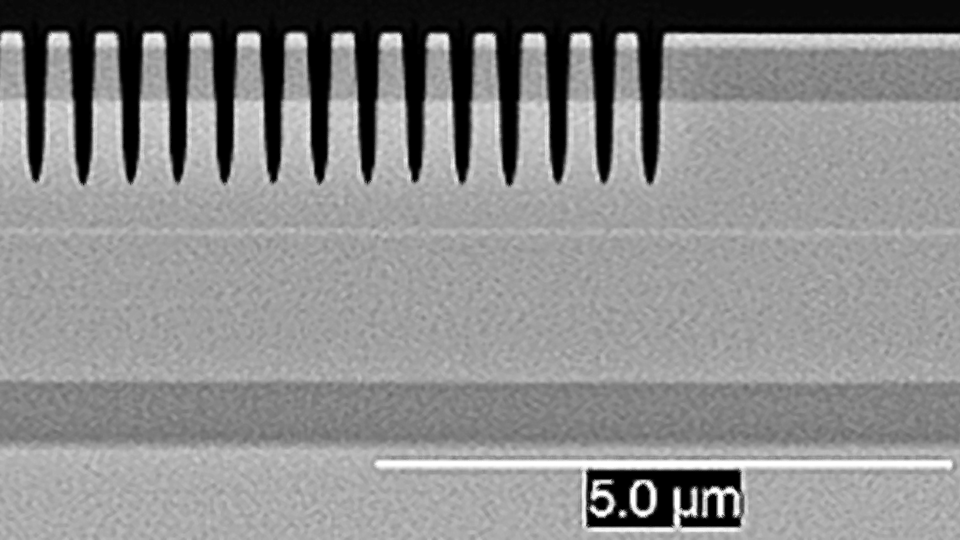Frequency-Stabilized Diode Lasers
A narrow linewidth of the emitted laser radiation is of interest for a variety of applications. These include frequency-stabilized diode lasers used in spectroscopy, nonlinear frequency conversion as well as high-precision laser measurement technology.

The basis of frequency stabilization are periodic Bragg grating structures located in the laser cavity. These gratings are introduced into the lasers during the growth process as overgrown gratings or subsequently as surface gratings (for detailed information on processes and methods, see GaAs laser diodes). We are also researching various laser concepts for frequency stabilization to meet application-specific requirements on the spectral quality, output power and beam quality.
DFB laser – distributed feedback laser
offer a high side mode suppression and narrow linewidth combined with an excellent beam quality.
Functional principle
Lateral waveguiding is provided by the RW structure. A Bragg grating extending across the resonator within the waveguide acts as a longitudinal mode filter.
Applications
- Raman & absorption spectroscopy
- nonlinear frequency conversion
- cooling of atoms by Doppler effect (Bose-Einstein condensation)
- state selection in atomic clocks
- interferometric metrology
Typical characteristics
- 760 nm to 1080 nm
- output power up to 500 mW, depending on wavelength
- side mode supression > 50 dB, spectral linewidth < 10 MHz over a wide power range
- nearly Gaussian beam profile over a wide power range
DBR laser – multi-section laser with internal reflector
combine a narrow line width with the ability to tune or modulate the emitted light and a very good beam quality.
Operating principle
DBR lasers consist of at least two different sections: a gain section, in which the laser radiation is generated, and a DBR section, in which an internal Bragg grating acts as a wavelength-selective reflector. Furthermore, a phase or absorber section can be implemented, which allows for a mode-hop-free tuning or with which the output power can be modulated (Q-switching).
Applications
- free space communication
- spectroscopy
- nonlinear frequency conversion
- metrology – high precision length measurement technology
- time-resolved fluorescence spectroscopy
Typical characteristics
- 635 nm - 1083 nm
- emitted power ≤ 1 W
- nearly Gaussian beam profile in a wide power range
mECDL – Diode laser with extended cavity
combine the advantages of an extremely small linewidth of diode lasers with external resonator with the mechanical stability and size of monolithic integrated lasers.
Functional principle
The spectral linewidth of a laser is proportional to the quality of its resonator. To obtain a high quality factor, mECDLs have a long resonator, which mainly consists of a passive and low-loss waveguide.
Applications
- state selection in atomic clocks
- atomic interferometry
- optical quantum sensing
- spaceborne metrology